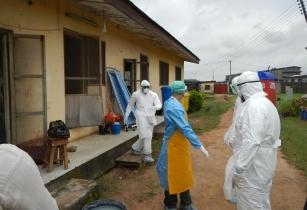Kimberley Bryant, Visionary Science Research Analyst at Frost & Sullivan, has completed a study on protective workwear, including analysis across countries South Africa, Nigeria and Kenya
New analysis from Frost & Sullivan, titled South African, Kenyan, and Nigerian PPE Market Overview and Outlook, 2016, finds that the total demand for PPE in South Africa, Kenya and Nigeria amounted to merely US$371.5mn in 2016 within the mining and quarrying, construction and manufacturing industries.
Occupational safety and health (OSH) practices are imperative. Over 2.3 million deaths occur globally each year from work-related accidents and diseases; this in addition to the 317 million non-fatal injuries and illnesses that occur as well. This incident occurrence results in a major economic burden because of extended absences from work. Poor OSH practices have cost an estimated 4 per cent of the global gross domestic product (GDP) annually. By enforcing employees to use personal protective equipment (PPE), companies can reduce the risk of accidents and illnesses, reduce future injury compensation costs, and create safer working environments for employees.
However, despite the obvious need for occupational safety, Sub-Saharan Africa has a significantly low demand for PPE because of a lack of stringent implementation of safety legislation. This lack enables smaller end-user participants to avoid general safety regulations and reduce capital expenditure, which is exacerbated during economic downturns as companies tend to cut down on OSH investments to increase profits.
The PPE market in South Africa, Kenya, and Nigeria is extremely competitive and price sensitive, resulting in customers choosing to forego safety, rather than spend more on expensive, higher-quality products. Product visibility is lacking and customers are more loyal to well-known brands than new products that may be better quality and possibly lower priced.
Additionally, PPE companies suffer from poor marketing strategies, and eCommerce has a slow uptake in the three countries analysed in the study. Many companies do not have an effective online presence and, thus, depend on brand reputation. PPE specifically designed for women is significantly lacking, and companies either provide female employees with ill-fitting PPE designed for men or do not provide any protective equipment at all.
According to Statistics South Africa, in 2016, the South African mining and quarrying industry reported a decline of employees from 2012 by 11.4 per cent. Consequently, companies are being forced into urgent cost-cutting measures, reducing production volumes, and even mothballing projects by several companies.
However, despite the volatile oil industry in Nigeria in 2016, the market is expected to recover in the future, which will drive the PPE market in the medium term. An oil boom in Kenya is predicted, with the country’s first oil discovery in the South Lokichar Basin. The pilot export of crude oil is due to start next month, in June 2017, and Kenya’s oil industry growth will drive the PPE market in the medium-to-long term. Therefore, rising activity in the mining and quarrying, construction and manufacturing industries will sustain the demand for PPE in South Africa, Kenya, and Nigeria.
Government legislation and regulation are other important factors to consider when making future strategic decisions in the PPE market. OSH legislation in Sub-Saharan Africa has significant room for improvement, which could potentially fuel growth in the PPE market in the long term. Limited laws cover the provision for, and use of, PPE in Nigeria, despite the high level of employment. This being said, PPE legislations have had some developments within Sub-Saharan Africa over the past few years. For example, Kenya put a new Mining Act in place in 2016, which is anticipated to increase PPE sales because of stricter OSH regulations at mines. Safety is a necessity in many industries and with increasing government enforcement, the demand for PPE is expected to grow in the long term.
Read the full report here.




